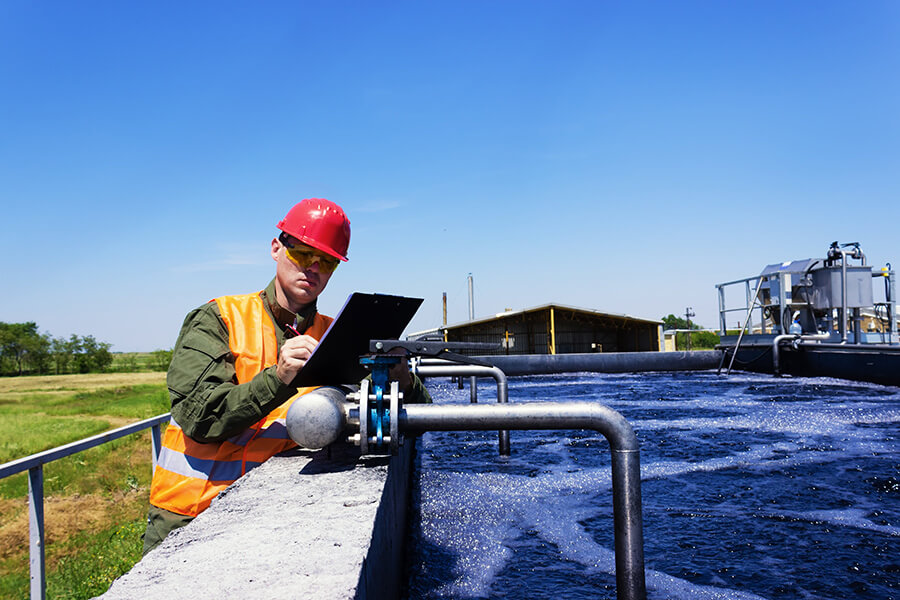Every premises with water systems is at risk of legionella outbreak, hence carrying out the most efficient, comprehensive and regular legionella risk assessments is of great importance for mitigating potential threat. The HSE have an Approved Code of Practice (ACoP) featuring L8, and an updated BS 8580(-1) standard for quality legionella risk assessments, this details the fundamental responsibility and requirements of controlling legionella outbreak within water systems. The HSG 274 also offers specific guidelines on how businesses can control and comply with their legal duties, hence as a risk assessor companies rely on the professionalism and accuracy of risk assessments to ensure their compliance with these vital regulations. This blog will explore how to modernise legionella risk assessments and why it is important to do so.
Multiple cases of legionella outbreak have been reported in the last couple of years; from legionella bacteria exposed in plumbing at a Nursing home at the start of 2018, to the most recent case at the start of this year, whereby a woman died of legionella pneumonia that she contracted from her stay at a hotel in Ludlow (BBC.com, 2019). Therefore, gaining media attention and an apparent failure in Legionella control in these circumstances, reflects directly upon the responsibilities of property owners and the water management organisations whose duty it is to carry out preventative legionella risk assessments.
Best practice for modernising Legionella Risk Assessments
Traditional paper-forms for legionella risk assessments can no longer be considered the most modern and efficient method of data collection (see reasons to move to paperless blog). It’s 2019 and digital transformation is a hot topic for all industries, making operations more intelligent, skilled and secure. BS 8580(-1) highlights the significance of having clear and coherent reports, thus digitally recording data will significantly mitigate the jeopardy of data loss, illegible text, poor record keeping; furthermore, warranting a secure and safe location to host and find required documentation (see updates to BS 8580 blog).
Using tailored software to digitally record risk assessment data, such as Velappity, compliments existing internal processes and natural way of carrying out risk assessments. Adopting pre-existing company-specific forms, Velappity enables transformation to bespoke digital forms, with drag and drop features for easily created documents and thus, sufficient data collection. Digital software is also not hindered by required volume of content, optimised with cloud-based architecture and development. Reports are instantly generated and sent to clients, no time wasted, enabling risk assessors to cover more client sites within their working hours.
Utilise Technology
Modern technology such as machine learning and speech recognition is also included to improve the intelligence of your risk assessment processes. Velappity has the ability to learn from previous actions and predict future schedules, such as when tests are due, or programming the software to understand specific measurements and automated descriptions. You can also apply voice-to-text, further quickening the process. Velappity is therefore an agile, intelligent application, that will surpass organisational expectations and ensure that your operations are not only compliant, but more competent and profitable.
Henceforth, modernising the legionella risk assessment process means more than simply complying with new laws and regulations to safeguard the prevention of Legionella outbreak. As every premise is at risk of outbreak and the fatal consequences of negligence, undertaking professional legionella risk assessments saves a lot more than simply time and money. In today’s digital world you cannot ignore the efficiency of specific software and technology to improve business operations, and risk assessment is no exception to this.
Let us show show Velappity in action and how it can modernise your Legionella Risk Assessment processes.
Reference:
BBC.com (2019). Sadness over woman’s legionella death at Ludlow Hotel. Online available at: https://www.bbc.co.uk/news/uk-england-shropshire-47408381
Further Reading:
HSE.gov.uk (2019). Legionnaires’ Disease- Legionella and landlords’ responsibilities. Online available at: http://www.hse.gov.uk/legionnaires/legionella-landlords-responsibilities.htm


